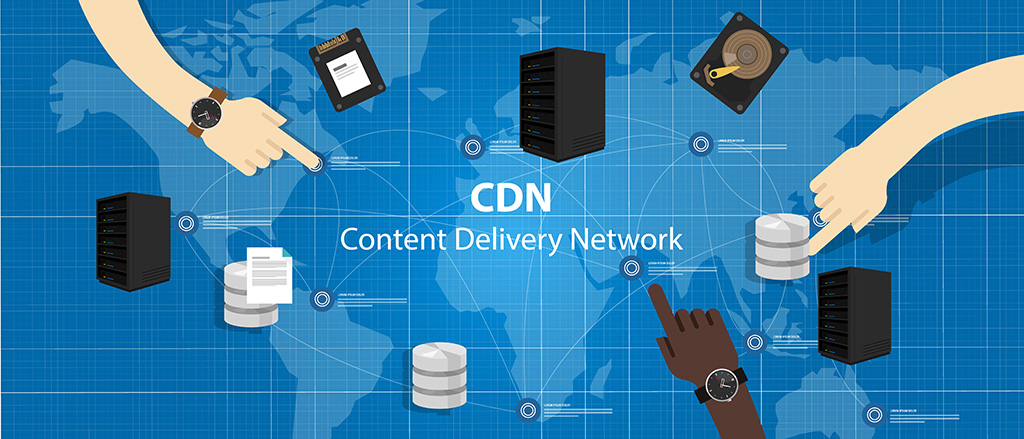A Strategic Approach to Boosting Business Performance
In the dynamic landscape of online businesses, delivering content swiftly and efficiently to users across the globe is paramount. Slow-loading websites can lead to user frustration, higher bounce rates, and diminished search engine rankings. To address these challenges, businesses are increasingly turning to Content Delivery Networks (CDNs) and caching strategies. In this comprehensive guide, we’ll explore the concept of caching content with a CDN and delve into how this powerful combination can significantly enhance your business performance.
What is a CDN?
A Content Delivery Network (CDN) is a network of geographically distributed servers that work together to deliver web content, such as images, videos, scripts, and stylesheets, to users.CDNs reduce latency, optimize load times, and enhance overall website performance.
How Does a CDN Work?
When a user navigates to a website and the browser requests web page content, the CDN identifies the user’s location and serves the requested content from the nearest available server in its network. This minimizes the physical distance the data needs to travel, reducing latency and ensuring faster load times. CDNs also offer additional attractive features like load balancing, and security including DDoS protection, and secure sockets layer (SSL) encryption.
CDNs and Image Optimization
Content Delivery Networks (CDNs) play a crucial role in optimizing images, considering they constitute up to 50% of a web page’s content. CDNs efficiently distribute images across multiple servers strategically placed around the globe, ensuring faster load times and enhanced performance for users accessing websites from various locations. By storing images closer to end-users, CDNs reduce latency and minimize the time it takes for images to load.
Moreover, CDNs often employ image optimization techniques such as compression and format conversion to further reduce file sizes without compromising quality. This optimization enhances user experience by delivering images swiftly and helps websites conserve bandwidth and reduce hosting costs. In essence, CDNs act as a vital infrastructure for image optimization, enabling web pages to load faster and more efficiently, thereby improving overall browsing experiences.
The Role of Caching in CDNs
Understanding Caching
Caching involves storing copies of web content in strategically located servers or memory to expedite future requests for the same content. Rather than fetching data from the origin server, which could be very far away geographically, every time a user makes a request, cached content can be delivered directly from the nearest CDN server.
Types of Caching
- Browser Caching Browser caching involves storing copies of static resources like images, stylesheets, and scripts on the user’s device. When the user revisits the website, the browser can retrieve these resources locally, reducing the need for additional server requests.
- Server-Side Caching Server-side caching occurs on the web server or an intermediary server like a proxy or CDN edge server. It involves storing static and dynamic content temporarily to serve subsequent requests more efficiently.
- Content Delivery Network (CDN) Caching CDNs employ caching at the network level. When a user requests content, the CDN caches static assets and delivers them from the nearest edge server. This minimizes latency and optimizes content delivery.

Benefits of Caching CDN Contents for Your Business
-
- Improved Website Speed and Performance Caching content with a CDN significantly improves website speed by reducing latency and minimizing the time it takes to load assets. Faster load times lead to a better user experience, lower bounce rates, and increased user engagement.
- Enhanced User Experience and Engagement Users today expect instant access to content. By caching content with a CDN, you ensure that users receive a seamless and responsive experience, irrespective of their geographical location. This enhanced user experience can contribute to higher retention rates and increased customer satisfaction.
- Search Engine Optimization (SEO) BenefitsWebsite speed is a crucial factor in search engine rankings. Search engines like Google consider page speed when determining search results. Caching content with a CDN can positively impact your SEO efforts by improving load times, your website’s ranking, and, subsequently a positive impact on organic traffic.
- Global Reach and Scalability CDNs have servers strategically positioned worldwide, allowing businesses to reach a global audience efficiently. By caching content at these geographically distributed servers, you ensure that users anywhere in the world experience fast load times, fostering scalability and global reach.
- Reduced Server Load and Bandwidth Costs Caching with a CDN offloads traffic from your origin server, reducing the load on your infrastructure. This not only improves server performance but also lowers bandwidth costs as CDN servers handle a significant portion of content delivery.
- Mitigation of Traffic Spikes and DDoS Attacks CDNs are equipped to handle sudden spikes in traffic and can absorb Distributed Denial of Service (DDoS) attacks effectively. By caching content and distributing it across multiple servers, CDNs contribute to the reliability and availability of your site as well as provide a robust defense against traffic surges and malicious attacks.
- Cost-Efficiency Caching with a CDN can lead to cost savings. With reduced server load, businesses may find they can operate with less powerful servers, lowering hosting costs. Additionally, improved performance and user experience can contribute to increased conversions and revenue.
- Flexible Content Delivery CDNs offer flexibility in content delivery. By caching various types of content, including images, videos, text, and dynamic data, you can tailor your caching strategy to meet specific business needs. Each piece of data can have its own lifetime setting after which the cached content is refreshed. This adaptability ensures optimal performance for different types of content.

Implementing CDN Caching: Best Practices
- Set Appropriate Cache Lifetimes Determine the optimal cache lifetimes for different types of content. While static assets like images and stylesheets can have longer cache lifetimes, dynamic content like inventory, pricing, and news may require more frequent updates measured in days, hours, or even minutes. Striking the right balance ensures users receive the latest content without compromising performance.
- Configure Cache Invalidation Mechanisms Implement cache invalidation mechanisms to ensure timely updates when content changes. This is crucial for dynamic content that may be updated frequently. By configuring cache invalidation, you prevent users from receiving outdated information.
- Utilize Cache-Control Headers Leverage Cache-Control headers to communicate caching directives to browsers and CDN servers. These headers specify how long content should be cached, whether it can be stored locally on the user’s device, and when it should be revalidated.
- Optimize Image Delivery Images often constitute a significant portion of web content. Optimize image delivery by compressing images, using responsive images, and leveraging image CDNs. These practices contribute to faster load times and improve overall website performance.
- Monitor and Analyze Performance Regularly monitor your website’s performance using tools like Google PageSpeed Insights and web analytics platforms. Analyze cache hit rate statistics, identify bottlenecks, and refine your caching strategy based on real-time data.
- Combine Caching with Content Compression Implement content compression techniques, such as GZIP or Brotli compression, in conjunction with caching. Compressing content before caching reduces file sizes, minimizing data transfer times and further optimizing website performance.
- Implement Secure Practices While optimizing for performance, ensure that secure practices are maintained. Configure your CDN to support secure connections (HTTPS), and be mindful of security implications when caching sensitive or private content.
Conclusion
Caching content with a CDN is a strategic imperative for businesses seeking to enhance their online presence, user experience, and overall performance. By leveraging the power of CDNs and implementing effective caching strategies, businesses can mitigate latency, reduce server load, and position themselves for global success. The benefits extend beyond mere performance improvements; they encompass enhanced SEO, cost-efficiency, and resilience against cyber threats. In a digital landscape where speed and accessibility are paramount, investing in caching content with a CDN a proactive step toward building a robust and competitive online presence.






